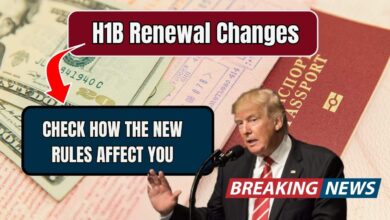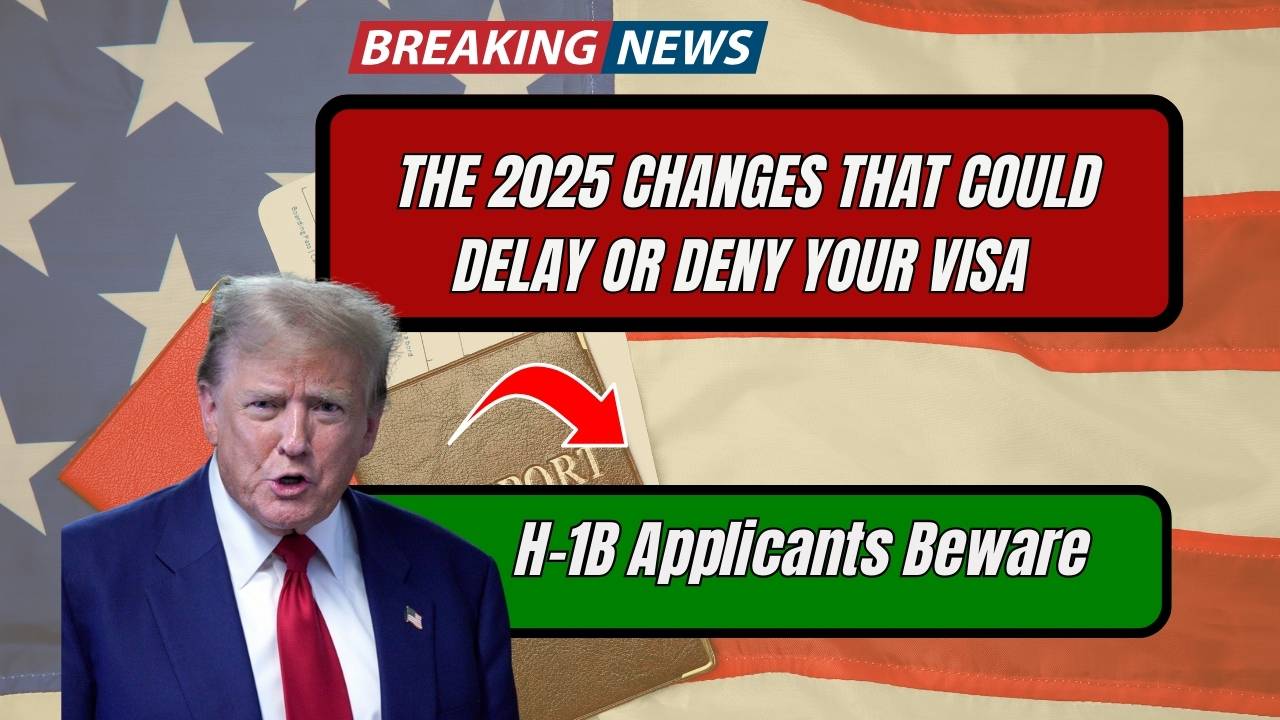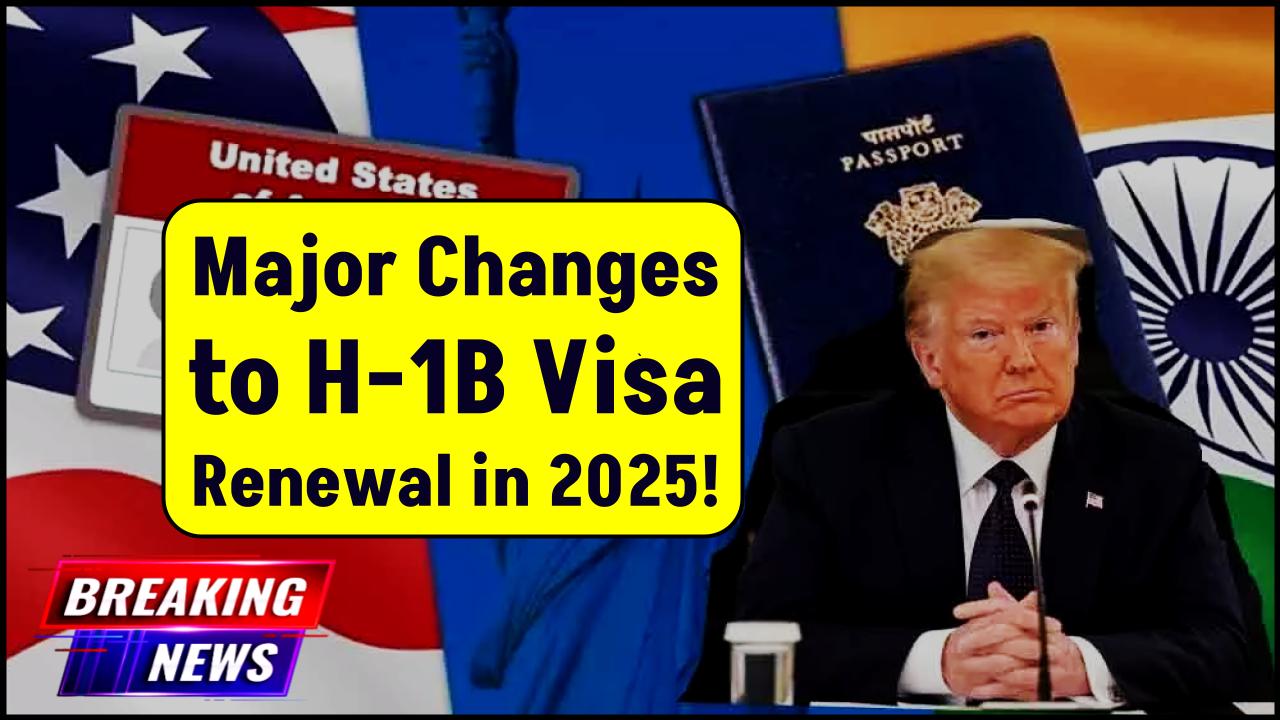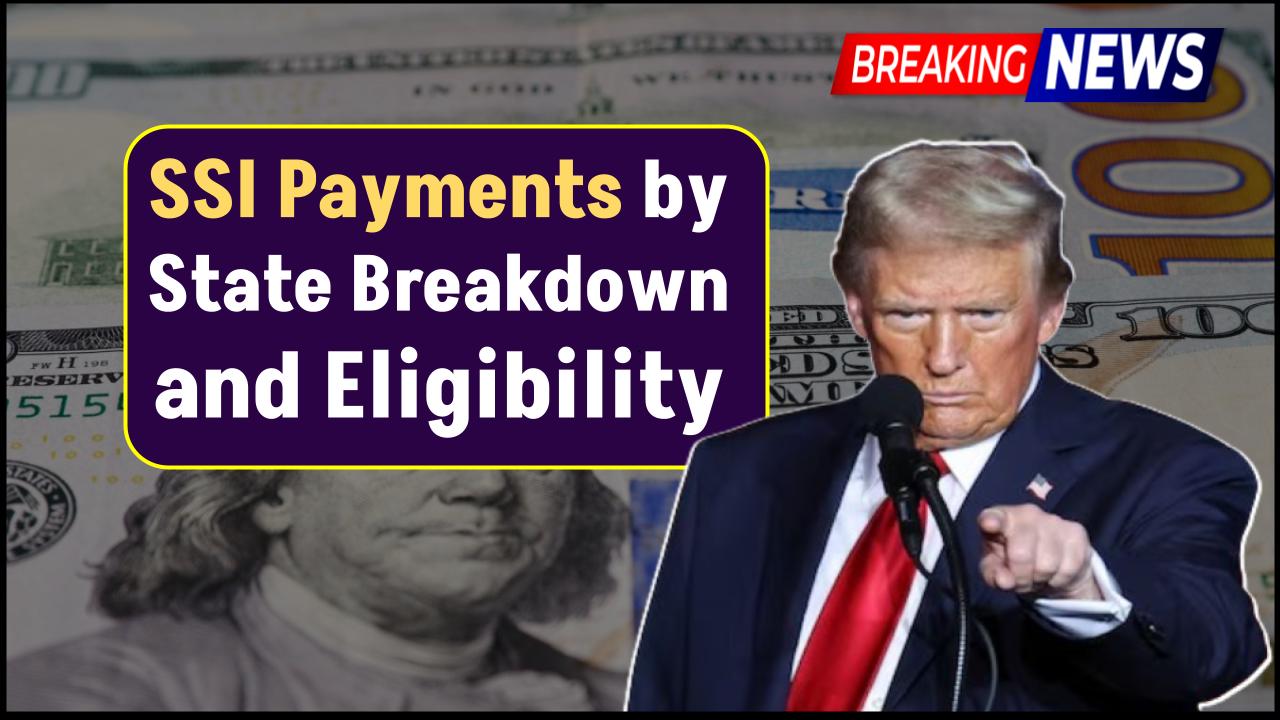Missed the H-1B Lottery? The L-1 Visa Could Be Your Fast Track to the U.S.!
Missed the H-1B Lottery – If you’ve missed out on the H-1B visa lottery, don’t lose hope just yet. There’s another powerful route that might bring you to the United States — and it doesn’t depend on luck. The L-1 visa allows qualified employees of multinational companies to transfer to a U.S. branch without worrying about lottery systems or annual caps.

In this article, we’ll explore why the L-1 visa is becoming a popular alternative to the H-1B, how it works, who qualifies, and how you can apply. Whether you’re a global executive, a specialist, or an HR manager looking for solutions, this guide will walk you through every step.
Missed the H-1B Lottery
| Topic | Details |
|---|---|
| Visa Name | L-1 Visa |
| Ideal For | Multinational employees transferring to U.S. offices |
| Types | L-1A (Executives/Managers), L-1B (Specialized Knowledge) |
| No Lottery? | Yes – not subject to the H-1B cap or lottery |
| Validity | Up to 7 years for L-1A, 5 years for L-1B |
| Dependent Benefits | Spouse can work, children can study |
| Blanket Petitions | Available for companies transferring multiple employees |
| Official Website | USCIS L-1 Visa Info |
If you missed the H-1B lottery, the L-1 visa could be your fast track to living and working in the United States. It’s especially powerful for global professionals and companies seeking seamless international transfers. With no annual caps, family benefits, support for new office setup, and a clear path to permanent residency, it offers flexibility and opportunity — without relying on chance.
Start your journey by checking if your employer has a U.S. presence and if your current role qualifies. And remember, early preparation and professional advice make all the difference.
What is the L-1 Visa and Why Is It Important?
The L-1 visa is a non-immigrant work visa that allows a U.S. employer to transfer an employee from one of its affiliated foreign offices to a U.S. location. It’s particularly useful for multinational companies and their employees.
There are two types of L-1 visas:
- L-1A: For executives or managers
- L-1B: For workers with specialized knowledge essential to the business
Unlike the H-1B, which is subject to strict caps and a random lottery, the L-1 visa is not capped and can be applied for any time of the year.
Who Can Apply for an L-1 Visa?
Basic Eligibility Criteria
To qualify for an L-1 visa:
- You must have worked outside the U.S. for the company (or a qualifying affiliate) for at least one continuous year within the past three years.
- The company must have a qualifying relationship (parent, branch, subsidiary, or affiliate).
- You must be transferring to the U.S. to work in a:
- Managerial or executive capacity (L-1A), or
- Position requiring specialized knowledge (L-1B)
Company Requirements
The U.S. employer must:
- Have a physical location in the U.S.
- Have a legitimate relationship with the foreign office (ownership or affiliation)
- Be actively conducting business both in the U.S. and internationally
L-1 Visa vs. H-1B: Key Differences
| Feature | L-1 Visa | H-1B Visa |
|---|---|---|
| Lottery | No | Yes (85,000 cap) |
| Dual Intent | Yes | Yes |
| Eligibility | Intra-company transferees | Specialized workers, any employer |
| Validity | L-1A: Up to 7 years; L-1B: Up to 5 years | Max 6 years |
| Dependent Work Rights | Spouse can work (L-2 visa) | Spouse can work (H-4 EAD) under conditions |
| Processing Speed | Often faster with blanket petition | Slower due to cap |
The L-1 visa is especially beneficial for companies needing to quickly place senior employees or key experts in their U.S. operations — without relying on the luck of the H-1B draw.
Step-by-Step Guide to Applying for the L-1 Visa?
Step 1 – Confirm Eligibility
Make sure the employee meets the work history and job role requirements.
Step 2 – File Form I-129
The U.S. employer files Form I-129 (Petition for a Nonimmigrant Worker) with the USCIS. If the company has a blanket petition already approved, this process can be faster.
Step 3 – USCIS Processing
USCIS reviews the petition, and upon approval, issues a Notice of Action (Form I-797).
Step 4 – Visa Interview
The employee must:
- Complete Form DS-160
- Schedule a visa interview at the nearest U.S. embassy or consulate
- Submit the approved petition and supporting documents
Step 5 – Travel to the U.S.
Once the visa is issued, the employee can enter the U.S. and start working at the specified office.
Benefits of Choosing the L-1 Visa Route
1. No Cap or Lottery
Apply year-round without the unpredictability of the H-1B system.
2. Spouse Can Work
The L-2 visa (for dependents) allows the spouse of the L-1 holder to apply for work authorization.
3. Dual Intent
L-1 visa holders can apply for a green card without showing intent to return home — making it easier to transition to permanent residency.
4. Pathway to Green Card
- L-1A holders can apply under EB-1C (no labor certification needed).
- L-1B holders may qualify under EB-2 or EB-3, though a PERM process is required.
5. Internal Mobility & Corporate Expansion
The L-1 visa is ideal for companies planning to establish a new office in the U.S. It allows executives and managers to come in and start operations.
Real-Life Example
Rohit Sharma, an IT manager from India, worked at his company’s Mumbai branch for three years. When the company opened an office in Austin, Texas, they needed someone who knew their systems inside and out. Instead of waiting for the H-1B lottery, the HR team applied for an L-1A visa for Rohit. He moved in within 3 months — no lottery stress, no long wait.
Potential Drawbacks to Consider
- Job Restriction: You can only work for your sponsoring employer.
- Limited Duration: Once the maximum stay period is over, you must leave unless you’ve transitioned to another visa or green card.
- Specialized Knowledge Scrutiny: L-1B applications are more heavily scrutinized for what qualifies as “specialized.”
- Denials Rising: In recent years, L-1B denials have increased, especially without detailed documentation.
Practical Advice for Applicants and Employers
For Applicants
- Make sure your role fits the USCIS criteria.
- Collect evidence of your past work history, job role, and achievements.
- Get your passport, employment letters, and academic certificates ready early.
For Employers
- Consider filing a blanket L petition if you regularly transfer employees — it can cut down processing times.
- Consult with immigration counsel to structure roles and job titles correctly.
- Prepare detailed documentation describing job duties, organization charts, and employment history to reduce chances of denial.
May 2025 Australian Work Visa Update: What’s New and How It Affects You
New BVI Work Visa Rules for 2025 – Are You Eligible? Find Out Now!
Breaking: June 2025 Visa Bulletin Reveals Major Changes for U.S. Immigration Applicants
FAQs About Missed the H-1B Lottery
Q1: Can I apply for an L-1 visa without a U.S. job offer?
No. You must have a specific job offer from the U.S. branch of the same company where you worked abroad.
Q2: Is it easier to get a green card on L-1 than H-1B?
Yes, especially for L-1A holders. You can apply under the EB-1C category, which doesn’t require a labor certification.
Q3: Can L-1 visa holders change employers?
No, L-1 visas are employer-specific. You must leave the U.S. or change your status if you switch jobs.
Q4: What happens if I get laid off?
You typically have a grace period of 60 days to find another qualifying role within the same company or adjust your visa status.
Q5: How long does the L-1 visa process take?
It can take 1–5 months, depending on USCIS workload. Premium processing (15-day service) is available for an additional fee.
Q6: Can I start a new U.S. office on an L-1 visa?
Yes. L-1A applicants can enter the U.S. to establish a new office, provided they meet the business plan and location requirements.







